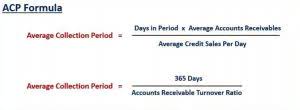
Conversely, expensing R&D costs immediately can result in a lower asset base and higher ROA in the short term, but this might not accurately reflect the company’s future earning potential. Accounting for research and development (R&D) costs requires chemical manufacturing companies to apply specific financial reporting rules. This FAQ section addresses how companies should record, capitalize, and disclose these expenditures according to different accounting standards.

Educational material on applying IFRSs to climate-related matters updated
Historically, GAAP has been developed to ensure consistency and clarity in the financial reporting of American corporations. IFRS, on the other hand, is principle-based, allowing more interpretation and requiring r&d accounting that financial statements be a ‘faithful representation’ of an entity’s financial position. This system is designed to achieve comparability and transparency on a global scale in financial reporting.

FASB to propose simplified guidance on software costs
- Under IFRS, the treatment of R&D costs is governed primarily by IAS 38, which addresses intangible assets.
- While taxpayers will still receive a benefit for the R&E costs that are paid or incurred, these costs can no longer be deducted in the current tax year.
- They must be assessed for impairment annually or more frequently if events or changes in circumstances indicate the asset might be impaired.
- This transparency aids users of financial statements in understanding the impact of R&D investments on a company’s financial position and performance.
The doses can only be used in patient trials during Phase III clinical testing, and cannot be used for any other purpose. The donation must be used to fund research activities in the area of infectious diseases over a two-year period. Company A will pay Company B $3 million only upon completion of the contracted work. M&As and partnerships are also forms of R&D as companies join forces to take advantage of other companies’ institutional knowledge and talent. There are several different types of R&D that exist in the corporate world and within government. The type used depends entirely on the entity undertaking it and the results can differ.
R&D Expense on Income Statement: Recognition and Disclosure
Referring to the total economy, Fellner [ 1970] estimates the rate of return on R&D to be in excess of 18 percent. Assuming a static technology, 18 percent is much greater than the marginal rate of return from plant and equipment. Consequently, contrary to the FASB opinion, there was tangible evidence of resource generation at the time of the R&D expenditure. R&D should not be capitalized even when future benefits are known simply because they “… cannot be measured with a reasonable degree of accuracy .
- The legal costs of $5,000 should therefore be provided for since they will have to be paid whatever the outcome of the case.
- The Government Accountability Office (GAO) released a report examining the initial impact of the tax credit on R&D in 1989 and found that it had a modest impact.
- There is nothing to suggest that Congress intended to change the definition of R&D expenses aside from including software development costs.
- For example, if $50,000 is spent, the journal entry would be a debit to Software Development Capitalized for $50,000 and a credit to Cash or Accounts Payable for $50,000.
- It can present serious challenges when measuring the rate of return on both its assets and its investments.
U.S. firms may be reluctant to invest in long-term R&D because of the expense-as-incurred financial reporting rules. Yet “[c]orporations in the U.S.A. are beginning to realize the intellectual property may be their most valuable asset in competing with Japan” [Dreyfuss, 1987]. This divergence creates variances in the reported value of intangible assets and can impact the company’s overall financial position. Additionally, the capitalization of development costs under IFRS affects both the cash reported on the balance sheet and the patterns of future amortization expenses. For costs incurred during the development phase, IFRS allows for capitalization if certain criteria are met.
At what point should research and development expenses be capitalized in the financial statements?
Since conforming provisions for Section 41(d)(1)(A) were made to align with Section 174, taxpayers must treat costs as Section 174 for them to be includible in computing the research credit under Section 41. Prior to the TCJA changes becoming law, Section 41 only required the expenditures to be eligible for treatment under Section 174; however, the taxpayer may have treated them differently under another code section such as Section 162. A significant decrease in costs being treated as Section 174 could cause taxpayers to have limited or no research credit depending on the client’s facts such as trend in qualified costs. Any new Section 174 rules could result in new, and potentially significant, book-tax differences and related deferred tax assets. Because it is not clear when or if this Section 174 capitalization provision will be deferred by Congress in 2023, taxpayers will need to begin to determine its impact on taxes and financial statements.

